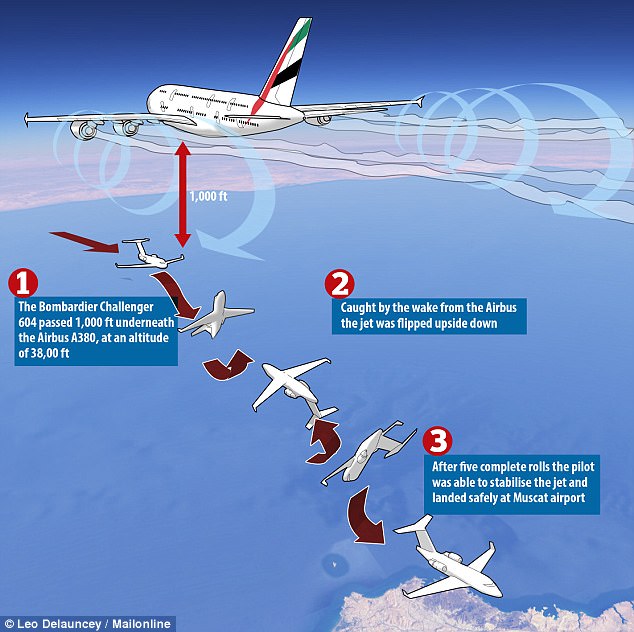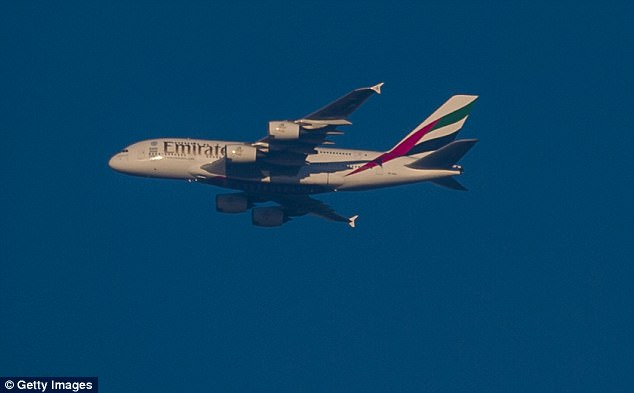The KC-135 was tasked with refueling a flight of A-10s supporting ground pounders when an F-16 came for gas and declared an emergency.
“We were in the area of responsibility and were already mated with some A-10 Thunderbolt IIs that were tasked with observing and providing close-air-support for our allies on the ground,” said Capt. Nathanial Beer, 384th Air Refueling Squadron pilot. “The lead F-16 came up first and then had a pressure disconnect after about 500 pounds of fuel. We were expecting to offload about 2,500 pounds.”

After the pilot completed his checklist, it became apparent that 80 percent of his fuel supply was trapped in the tanks and couldn’t get to the engine. The pilots would have to bail out over ISIS territory or try to make it back to allied airspace.
500 pounds of fuel is very little in an F-16, so the KC-135 flew home with the fighter and topped off its gas every 15 minutes.
“The first thought I had from reading the note from the deployed location was extreme pride for the crew in how they handled the emergency,” said Lt. Col. Eric Hallberg, 384th Air Refueling Squadron commander. “Knowing the risks to their own safety, they put the life of the F-16 pilot first and made what could’ve been an international tragedy, a feel-good news story. I’m sure they think it was not a big deal, however, that’s because they never want the glory or fame.” The KC-135 crew returned to their planned operation once the F-16 was safely home and were able to complete all of their scheduled missions despite the detour.
A German private plane flipped upside down, rolled uncontrollably and then plunged 10,000ft after hitting wake turbulence caused by an Emirates superjumbo flying above it ~ but miraculously did not crash. The near-disaster caused serious injuries on the small Challenger jet, which was carrying nine passengers and crew members, and once the pilots initially recovered the plane it was forced to make an emergency landing.
The terrifying incident happened when a Bombardier Challenger 604 business jet en route over the Arabian sea, about 630 nautical miles southeast of Muscat, Oman, flew 1,000ft below an Emirates Airbus A380-800 flying from Dubai to Sydney in the opposite direction.
Revealed: How private jet caught in the wake of a superjumbo was flipped on its back, ROLLED and plunged 10,000ft before pilot pulled off miracle recovery
 Loungtastic’s Vids On YouTube! 🛬
Loungtastic’s Vids On YouTube! 🛬 A Bombardier Challenger 604 business jet flipped upside down, rolled uncontrollably and then plunged 10,000ft after hitting wake turbulence caused by an Emirates superjumbo flying above it, but miraculously did not crash
 Loungtastic’s Vids On YouTube! 🛬
Loungtastic’s Vids On YouTube! 🛬 The Bombardier Challenger 604 (a file photo of the same model plane above) business jet en route over the Arabian sea had flown 1,000ft below the Emirates Airbus A380-800 flying from Dubai to Sydney in the opposite direction, when it got caught in its wake turbulence
The wake turbulence caused by the superjumbo Airbus ~ the world”s largest passenger jet ~ was so powerful that about one minute after it passed by, the Challenger, which was flying at 34,000 feet, was sent into an uncontrolled roll that flipped the aircraft between three and five times. Wake turbulence is formed behind an aircraft as it flies through the air, much like a boat creates a wake in the water. It is exacerbated by a pair of vortices ~ whirling masses of air ~ that spin from the wingtips. The vortices are mostly created when a plane is flying slow and the wings are working hardest to produce lift. The bigger the plane, the bigger the wakes. The most virulent wakes leave smaller planes vulnerable if they run into one. An Airbus A380 is 73 metres long and weighs between 386-560 tonnes, while the Bombardier Challenger 604 is just 21metres long and weighs between 17 and 21 tonnes. When the Challenger faced the Airbus”s wake turbulence, both of the plane”s engines flamed out and its Ram Air Turbine would not work, causing it to plunge 10,000ft. Loungtastic’s Vids On YouTube! 🛬The aircraft’s pilots were able to regain control of the plane using “raw muscle force” and were finally able to restart the engines.
They diverted their flight to Muscat airport in Oman, where they made an emergency landing. Several of the nine people on board were taken to the hospital, with one person sustaining serious injuries in the incident. The aircraft, operated by German carrier MHS Aviation, was totaled, with damage so extensive that it had to be written off. An Airbus A380 (a file photo of the same model plane pictured above) is 73metres long and weighs between 386-560 tonnes, while the Bombardier Challenger 604 is just 21metres long and weighs between 17 and 21 tonnes
The incident happened at cruising altitudes known as “coffin corner” because of their high risk.
Coffin corner is an altitude where a fixed-wing aircraft”s stall speed is near its critical mach number – the ratio of the speed of the aircraft to the speed of sound. Both caused by pressure over the wings.
Loungtastic’s Vids On YouTube! 🛬
An Airbus A380 (a file photo of the same model plane pictured above) is 73metres long and weighs between 386-560 tonnes, while the Bombardier Challenger 604 is just 21metres long and weighs between 17 and 21 tonnes
The incident happened at cruising altitudes known as “coffin corner” because of their high risk.
Coffin corner is an altitude where a fixed-wing aircraft”s stall speed is near its critical mach number – the ratio of the speed of the aircraft to the speed of sound. Both caused by pressure over the wings.
Loungtastic’s Vids On YouTube! 🛬 In the region, it”s difficult to keep an aircraft stable during flight – if the plane goes to slow, it could stall at a high altitude.
If the plane goes too fast, it will exceed its mach number and it will go supersonic, which could cause the wings to fall off. Germany”s Federal Bureau of Aircraft Accident Investigation (BFU) is investigating the incident, despite it happening in international waters. The BFU declined to comment on the investigation because it is ongoing. MailOnline contacted Emirates Airlines and MHS Aviation for comment but have not received a response. An Airbus spokeswoman told IBTimes: “We are aware that an investigation is ongoing to determine the origin of turbulences encountered by a jet. “At this stage nothing indicates an Airbus A380 aircraft is involved and we cannot comment further on this incident, please contact the German BFU.” A spokesman from the Flight Service Bureau (FSB), an information source for air operators, compared the amazing recovery to the “Miracle on the Hudson”, where pilot Sully Sullenberger landed a US Airways Airbus on the Hudson River after hitting a flock of geese in 2009. Loungtastic’s Vids On YouTube! 🛬But the FSB spokesman said that the incident also raises concerns that the Airbus 380 causes more danger to airways than previously thought.
“With the A380 vs Challenger 604 incident, there is now growing concern amongst aircrews about the effects of the A380″s wake turbulence,” the spokesman told The Times. The dangers of wake turbulence have increased as navigation and air-traffic control technology improvements have allowed aircraft to fly closer to one another. The European Aviation Safety Agency will soon release a bulletin to reduce the risk of such encounters. EASA said it had been working on a draft for the bulletin before the Challenger and Airbus incident. “Wake can be encountered up to 25 nautical miles behind the generating aeroplane,” a draft of the EASA circular to EU airlines and air traffic controllers says, according to the Aviation Herald. “The encounters are mostly reported by pilots as sudden and unexpected events.” “When possible, contrails [vapour trails] should be used to visualise wakes and estimate if their flight path brings them across or in close proximity,” the draft says. This isn”t the first time a smaller aircraft has faced wake turbulence made by an Airbus 380. In September 2012, a Virgin Australia Boeing 737 hit wake turbulence made by an Emirates A380 near Bali. Both planes made it to their destinations safely. In 2011, an Air France Airbus A320 rolled left to an angle of 25-30 degrees after hitting wake turbulence made by an Emirates A380. No one was injured. Also in 2011, a British Airways Airbus A320 rolled over 50 degrees and the autopilot disconnected after being hit by wake turbulence made by a Qantas Airbus A380 flying from London to Singapore. Four people on the British Airways flight had to be treated for serious injuries. Loungtastic’s Vids On YouTube! 🛬In another 2011 incident, wake turbulence from a Singapore Airlines Airbus 380 caused an Air France Boeing 747 do drop 200ft in 15 seconds and roll left and right. No one was injured, and both planes reached their destinations safely.

Not cool! Loungtastic’s Vids On YouTube! 🛬
Now THAT’s A short takeoff for a giant!

FYI: Ilopango International Airport (ICAO: MSSS) is an airport located on the eastern part of the city of San Salvador, El Salvador.




















Alcohol Recovery Programs Near Me http://aaa-rehab.com Drug Rehab Centers Near Me http://aaa-rehab.com Drug Rehab
http://aaa-rehab.com